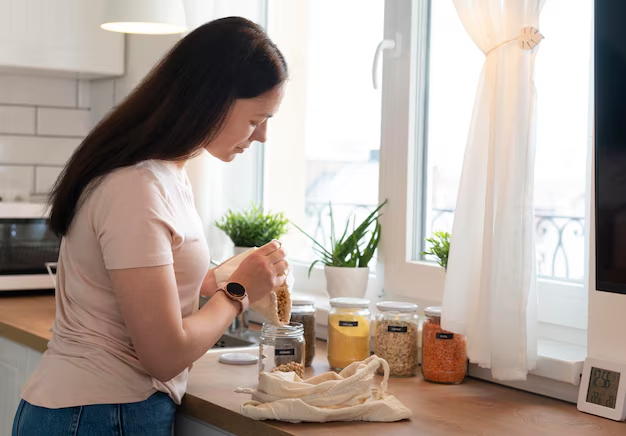How Long Can You Keep Your Homemade Dressing Refrigerated?
Picture this: you've just whipped up a vibrant, flavorful homemade dressing to top your salads for the upcoming week. But, as you stash it in the refrigerator, a question lingers in your mind: How long will this delicious concoction last before it goes bad? This is a common query for anyone who enjoys making their dressings at home. Let's explore this topic in detail, delving into factors that impact shelf life, tips for extending freshness, and other practicality-focused insights. 🥗
Understanding Homemade Dressing Shelf Life
Factors Influencing Dressing Longevity
Several variables can affect how long homemade dressing stays fresh in the refrigerator:
Ingredients Used: The primary factor affecting shelf life is the ingredients. Dressings made with fresh ingredients like herbs, fruits, or garlic tend to have shorter lives. Acidity from vinegar or lemon juice can extend its longevity by inhibiting bacterial growth.
Storage Method: Proper storage is critical. Airtight containers prevent exposure to air, which can lead to faster spoilage. Refrigeration halts or slows down bacterial activity.
Handling Practices: If a dressing is exposed to contaminants—by not using clean utensils, for example—it can spoil more quickly.
General Shelf Life Expectations
While the shelf life of homemade dressing can vary widely based on its specific components, here are some general guidelines:
- Vinaigrettes: Typically last around 1 to 2 weeks. Their acidic bases (vinegar, lemon juice) help preserve them longer than cream-based dressings.
- Cream-Based Dressings: Generally keep for about 3 to 7 days. Ingredients like yogurt or cream make them more perishable.
Extending the Life of Your Dressing
Best Practices for Prolonging Freshness
To get the most out of your homemade dressings, consider these tips:
Use Mason Jars or Glass Containers: These types of containers seal better than plastic ones, offering superior protection from air exposure.
Include Acidic Elements: Ingredients such as vinegar or lemon juice can act as natural preservatives.
Refrigerate Promptly: As soon as it's made, place your dressing in the fridge to minimize exposure to warm temperatures, which can accelerate bacteria growth.
Keep Ingredients Separate: If making a large batch, consider preparing ingredients separately and combining them as needed.
The Importance of Fresh Ingredients
Using fresh, high-quality ingredients not only makes for a tastier dressing but also extends its shelf life. Wilted or old herbs, for example, can spoil faster and lead the entire dressing to degrade sooner.
Signs Your Dressing Has Gone Bad
Visual and Sensory Indicators
Knowing when a dressing has expired can prevent unpleasant experiences or, worse, foodborne illness. Look out for:
Separation Beyond Normal: While some separation can occur in vinaigrettes, excessive separation might indicate spoilage.
Off Odors: If the dressing smells sour or generally off, it's best not to consume it.
Visible Mold: Any sign of mold growth means the dressing should be discarded immediately.
Homemade vs. Store-Bought Dressings
Why Choose Homemade?
Homemade dressings allow you complete control over ingredients, letting you avoid preservatives or additives often found in store-bought options. They can also be tailored to your taste preferences, dietary needs, or nutritional goals.
Comparison of Shelf Lives
Store-bought dressings generally last longer due to added preservatives, which extend their shelf life considerably. However, for those who prioritize fresh ingredients and natural flavors, the trade-off is often worth the shorter shelf life.
Practical Tips for Dressing Lovers
Here's a quick guide to enhancing your dressing-making endeavors:
- 🥄 Experiment with Preservatives: Natural preservatives like honey or salt can extend life subtly.
- 🍋 Balance Flavors Smartly: Combine sweet, sour, salty, and umami to naturally enhance taste without additional preservatives.
- 🌿 Prioritize What You Love: Focus on making smaller batches of dressings that you can finish within a week, ensuring freshness with every use.
- 👩🍳 Label Everything: It can be easy to forget when you made the dressing. Labeling jars with the date of preparation helps you keep track.
Recap: Key Insights and Actionable Steps
Here's a handy summary of what we’ve covered on homemade dressing storage:
- Shelf Life Varies: Vinaigrettes (1-2 weeks), Cream-based (3-7 days).
- Store Properly: Use airtight containers and refrigerate promptly.
- Check for Spoilage: Look for off smells, mold, or excessive separation.
- Fresh Is Best: Quality ingredients enhance flavor and longevity.
- Smaller Batches: Ensure fresher servings and less waste.
Ensure your homemade dressings are the highlight of your meals by keeping them fresh and flavorful. By understanding the nuances of storage and best practices, you not only maximize enjoyment but also support food safety and quality. Now, you can relish the art of creating your dressings with confidence, savoring each drop knowing it’s at its peak. 🍶✨
